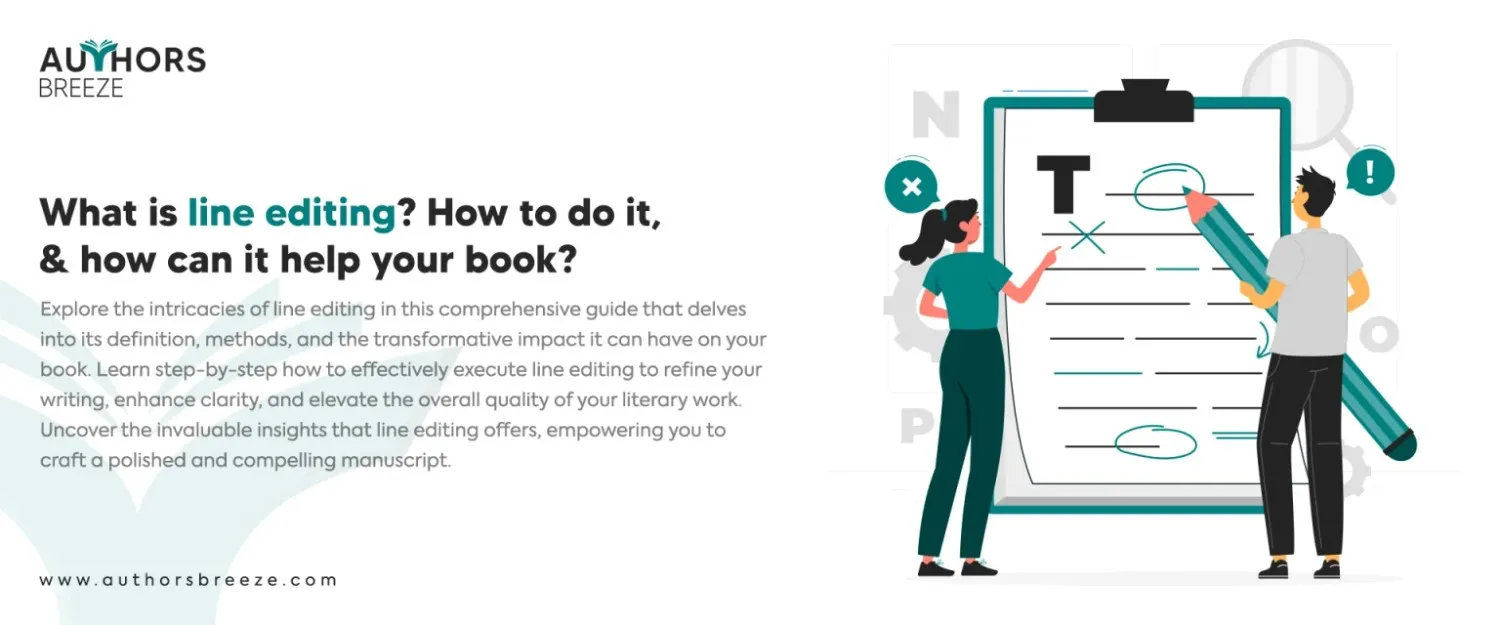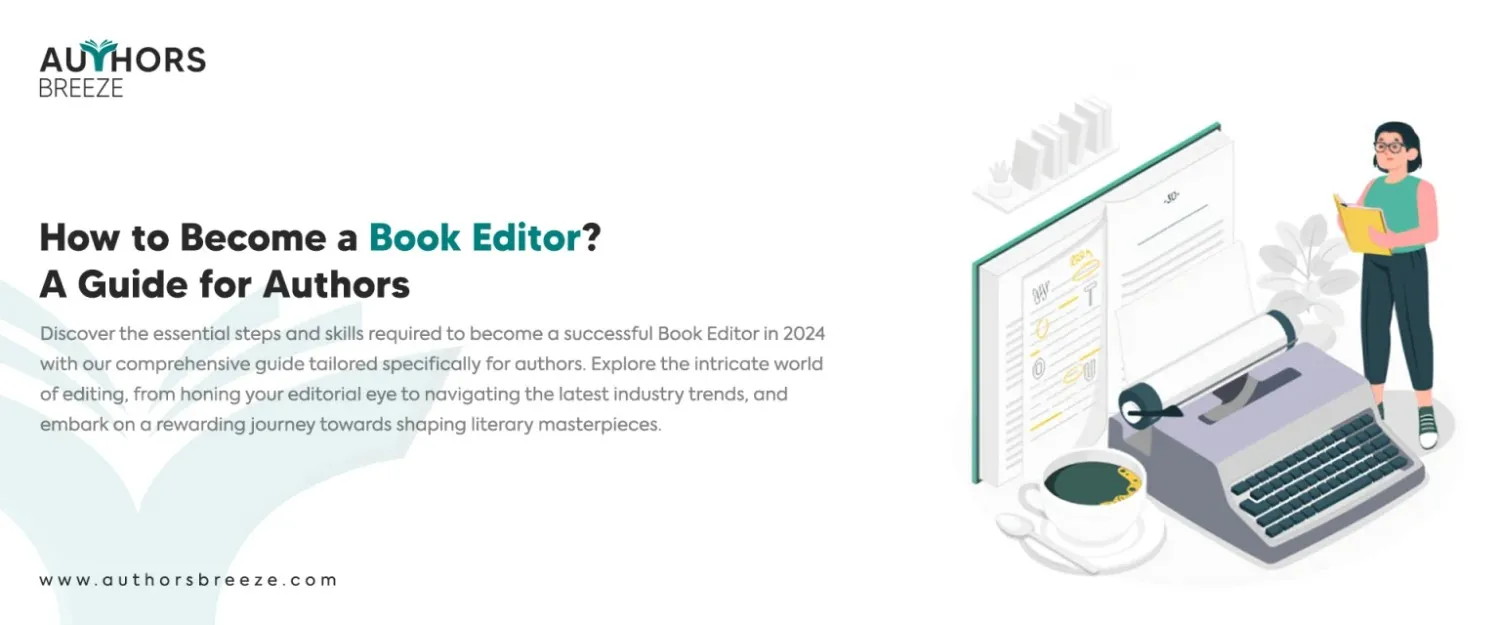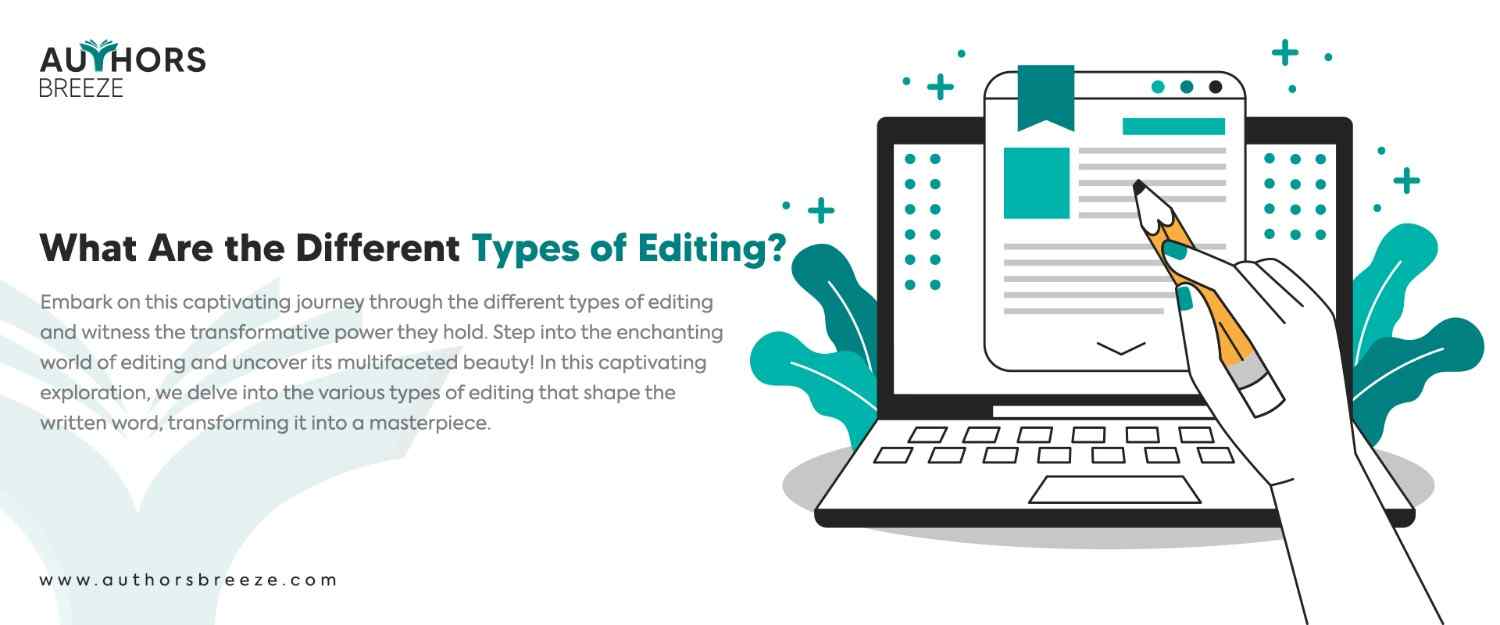Don’t Have Time to Read? Listen to this Article Instead!
An exemplary piece of literary work is the result of flawless writing, and editing plays a major role in it. Whether copyediting or line editing, every edit matters when you write a book. So, what does edit mean, or how can we define edit? Editing is preparing a written work for publication by correcting and changing it. Among the various types of editing, line editing is the one that you should not pass over. Today, we will look at line editing and how you can line edit your book.
What is Line Editing?
One of the most common questions authors ask is what line editing is. Line editing refers to the process of fixing writing issues line by line with a focus on the content, language, and style. A line editor is responsible for all the line edits. When you line edit your work, you fix issues with the writing style, language use, paragraph level, and the overall content itself.
The line editor edits the manuscript carefully and acts as a reader while doing so in a way that exerts the feeling of the author through word choice, style, and sentence structure. They have to pay attention and enhance it line-by-line so the language of the manuscript is sharp and clear. The line editors look closely at how the author’s word choice, syntax, and writing style contribute to the tone of the book or article.
Who is a Line Editor?
The editor meaning, or the meaning of editor, is “A person who edits the lines and makes sure that the written work is effective.” But what is a line editor? A line editor is someone who edits the lines in a book or article and is responsible for authors’ specific writing styles; this is why it is also known as stylistic editing.
Line Editors vs Beta Readers
Editing is a skillful process aimed at enhancing a manuscript, carried out by professionals to refine it. Typically, writers collaborate with a single editor at a time. In contrast, beta readers capture the reader’s response to the existing story on the page.
Writing Coaches vs Line Editors
Editing focuses on spotting and fixing issues in a manuscript that already exists. Coaching, on the other hand, aims to prevent issues from arising in the manuscript in the first place. While editing helps writers enhance their ongoing work, a writing coach supports writers in improving their current projects and fosters long-term skill development and mastery.
Copy Editing vs Line Editing
Line and copy editing have significant differences. To define copy, it is a written matter, while copy editing means editing it. In contrast to that, a line edit is where you focus on the style and language used within the content.
Line editing happens first, focusing on style, while copy editing comes next, dealing with mechanics. A line editor looks at how the writing flows and its style. On the other hand, a copy editor ensures the language follows English standard rules and the house style guide. Although line editors and copy editors share attention to detail and a love for language, their roles are distinct.
Top of Form
It is important to note that copyediting should follow line editing; it should not take place at the same time or precede it. The refinement of the page-by-page and sentence-by-sentence content in your manuscript should be completed before engaging in the finer adjustments of a copyedit. This approach ensures that time and resources spent proofreading early draft sections are not wasted on material that might undergo significant changes or can be entirely omitted in the final draft.
A copyeditor is typically the final person to review the manuscript before it enters the production phase. In simplified terms, an editor’s responsibility is to enhance the overall storytelling. At the same time, a copyeditor focuses on grammatical correctness on every page.
Is Your Work Ready to Shine?
Transforming your writing into a masterpiece requires professional editing services. No matter if you want to polish a manuscript or refine a blog post, our expert editors are here to elevate your words.
Hire a Book EditorHow To Line Edit?
In line editing, we carefully read each sentence of the written content and look at how each word is used. For example, you can check for:
- What tone does this part of the story have? Do the words make that tone well?
- Are there extra words or things that don’t need to be here?
- Do the sentences fit together nicely? Do they go from one to the next smoothly?
- Are the words precise, and are not too common?
- Is the way the story is told consistent throughout? If it changes, does it make sense?
The line editor might also talk with the writer to discuss the changes, solve problems, and understand what the writer meant. The editing process might happen all at once or in a few rounds between the writer and the editor.
When doing a line edit, it is a good idea to focus on the following things:
Dialogue
Can you make your characters talk in a shorter time? Does it sound real? Can you remove some words to make it more convincing?
Action
Look at what’s happening in the story. This is important, especially in scenes with a lot of action, like intimate moments. Are there too many details, or does the action make sense?
Long Sentences
Can you make your sentences shorter to make a bigger impact? Does the rhythm of the sentence guide you through the scene?
Unnecessary Words
Everyone has words they use too much. You can use the ‘find’ tool to see how many times you use them. You can often delete words like ‘just’ or many ‘that’s.’
Repetition
Check for saying the same thing in different ways. Sometimes, in the first draft, you might repeat things without realizing it. Remember that your reader is smart, and you only need to say something once.
Line Editing Tips
If you’re planning to edit your writing and publish a book on your own, here are some simple tips to make the process easier:
Change the Way You Read
Try to read in a different book format. For that, change the font style and color. It tricks your brain into thinking of the text as something new.
Take Breaks Between Edits
Give yourself some time between your last edit and the final review. It could be a few days or even a week. Your brain needs a break to look at the words with fresh eyes.
Read Aloud
Read your work out loud. How do the words sound when spoken? You can even ask someone to read it to you or use tools such as Microsoft Word’s read-out-loud function. Different voices can highlight areas that need improvement.
Ask for Help
Do not hesitate to seek help. Professional editors are available if you feel overwhelmed. Writing can be a solitary task, but that does not mean you have to do everything alone.
Avoid Overusing a Thesaurus
While a thesaurus can be helpful, do not rely on it too much. Sometimes simple words work best. If you find yourself searching for a ‘better word,’ reconsider if the word is the issue or if you need to clarify your message.
Don’t Overanalyze
Trust yourself and your readers. Avoid over-explaining, as your readers are often more intelligent than you might think. Trust that your writing is strong enough to convey your point without excessive explanation.
Break It Down
Editing does not have to be a daunting task for you. Break it into smaller steps. Remember, you cannot eat an elephant whole — take it in small, manageable chunks.
Done Refining Your Manuscript?
Now, it’s time to turn your polished work into published work. Whether you\\\\\\\'re a seasoned author or a first-time writer, we\\\\\\\'ve got the expertise to guide you through the publishing journey.
Hire a e-Book PublisherFAQs
What is the difference between copyediting and line editing?
Line editing always comes before copy editing. Line editors focus on the writing style, while copy editors focus on the technical details such as grammar. A copy editor makes sure that the language in a piece of writing follows the rules of the language and matches the specific style guide of the place where it is being published.
What is an example of a line edit?
A line edit makes sentences simpler and more effective. Here is an example of a line edit:
Original: "The large and imposing castle stood on top of the hill, and it looked really old and ancient."
Line Edited: "Atop the hill, the ancient and imposing castle loomed large."
This example showcases rephrasing and restructuring the sentence to make it more concise, fluent, and visually descriptive.
What is the difference between line editing and proofreading?
A meticulous line editor usually does both line and copy editing, considering elements such as voice, flow, pacing, and word choice. On the other hand, proofreading is less about improving word choice and more about catching typos and ensuring consistent formatting.
Conclusion
You would now know what is line editing who is a line editor and how you can line edit your content. To put it into simple words for you, it is the process that involves improving the overall written speech. In addition, a line editor is the one who line-edits your content. Follow the above-mentioned steps, focus on the tips, and you are good to go.
We hope our content helped you understand the intricacies of line editing. Now, you can polish and finalize your book, and if you want to self-publish it, you can ask Authors Breeze. We will not only help you publish it but also market it in order to reach the maximum number of readers.





